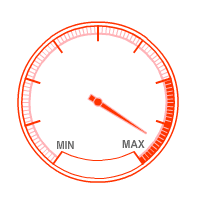Re: Origin of Indo-European element in Armenian
Whilst I agree with you that language is very important. The problem is as you point out that people accultrate languages and cultures. Which limits approaches based on their study and far more in regards to ancient migration patterns can be discerned from the gentic evidence, than the distribution of languages.
Whilst it is belived to of emerged in the Near East/Western Asia. mtDNA Haplogroup X2 (Armenians 4% - Georgia 8%) has a widespread distribution throughout West Eurasia at low levels.
mtDNA Haplogroup X2 is of intrest to Anthropologists as it is found amongst north eastern, Amerindian groups, such as the Ojibwa people. Intriguingly the Ojibwa also have 79% Haplogroup R1 and this isn't (as some suggest) the result of recent European admixture. Since Haplogroup R and Q are very distantly related, phylogeographicly Western/Central Asian markers and R1* like Q1a3a reached the Americas from Eurasia along with C3 (Mongols). As the global distribution of these haplogroup are associated with the re-settlement of Eurasia following the last glacial maximum.
Originally posted by jgk3
View Post
Whilst it is belived to of emerged in the Near East/Western Asia. mtDNA Haplogroup X2 (Armenians 4% - Georgia 8%) has a widespread distribution throughout West Eurasia at low levels.
mtDNA Haplogroup X2 is of intrest to Anthropologists as it is found amongst north eastern, Amerindian groups, such as the Ojibwa people. Intriguingly the Ojibwa also have 79% Haplogroup R1 and this isn't (as some suggest) the result of recent European admixture. Since Haplogroup R and Q are very distantly related, phylogeographicly Western/Central Asian markers and R1* like Q1a3a reached the Americas from Eurasia along with C3 (Mongols). As the global distribution of these haplogroup are associated with the re-settlement of Eurasia following the last glacial maximum.
mtDNA Haplogroup X: An Ancient Link between Europe/Western Asia and North America?
The results identified a consensus haplogroup X motif that characterizes our European and Native American samples. Among Native Americans, haplogroup X appears to be essentially restricted to northern Amerindian groups, including the Ojibwa, the Nuu-Chah-Nulth, the Sioux, and the Yakima, although we also observed this haplogroup in the Na-Dene–speaking Navajo. Median network analysis indicated that European and Native American haplogroup X mtDNAs, although distinct, nevertheless are distantly related to each other. Time estimates for the arrival of X in North America are 12,000–36,000 years ago, depending on the number of assumed founders, thus supporting the conclusion that the peoples harboring haplogroup X were among the original founders of Native American populations. To date, haplogroup X has not been unambiguously identified in Asia, raising the possibility that some Native American founders were of Caucasian ancestry.
The results identified a consensus haplogroup X motif that characterizes our European and Native American samples. Among Native Americans, haplogroup X appears to be essentially restricted to northern Amerindian groups, including the Ojibwa, the Nuu-Chah-Nulth, the Sioux, and the Yakima, although we also observed this haplogroup in the Na-Dene–speaking Navajo. Median network analysis indicated that European and Native American haplogroup X mtDNAs, although distinct, nevertheless are distantly related to each other. Time estimates for the arrival of X in North America are 12,000–36,000 years ago, depending on the number of assumed founders, thus supporting the conclusion that the peoples harboring haplogroup X were among the original founders of Native American populations. To date, haplogroup X has not been unambiguously identified in Asia, raising the possibility that some Native American founders were of Caucasian ancestry.
First, haplogroup X variation is completely captured by two ancient clades that display distinctive phylogeographic patterns—X1 is largely restricted to North and East Africa, whereas X2 is spread widely throughout West Eurasia. Second, it is apparent that the Native American haplogroup X mtDNAs derive from X2 by a unique combination of five mutations. Third, the few Altaian (Derenko et al. 2001) and Siberian haplogroup X lineages are not related to the Native American cluster, and they are more likely explained by recent gene flow from Europe or from West Asia. Fourth, the split between “African” X1 and “Eurasian” X2 subhaplogroups of X is phylogenetically as deep as that within the branches of haplogroup U that also differ profoundly in their phylogeography. Thus, subhaplogroup U6 is largely restricted to North Africa (as X1), whereas subhaplogroup U5 is widespread in West Eurasia (as X2). The phylogeographic patterns and the coalescence times that we obtained here suggest that the basic phylogenetic structures of the mtDNA haplogroups in West Eurasia and North Africa are as ancient as the beginning of the spread of anatomically modern humans in this region. Finally, phylogeography of the subclades of haplogroup X suggests that the Near East is the likely geographical source for the spread of subhaplogroup X2, and the associated population dispersal occurred around, or after, the LGM when the climate ameliorated. The presence of a daughter clade in northern Native Americans testifies to the range of this population expansion.
http://www.ncbi.nlm.nih.gov/pmc/articles/PMC1180497/
http://www.ncbi.nlm.nih.gov/pmc/articles/PMC1180497/





 ))
))

Comment